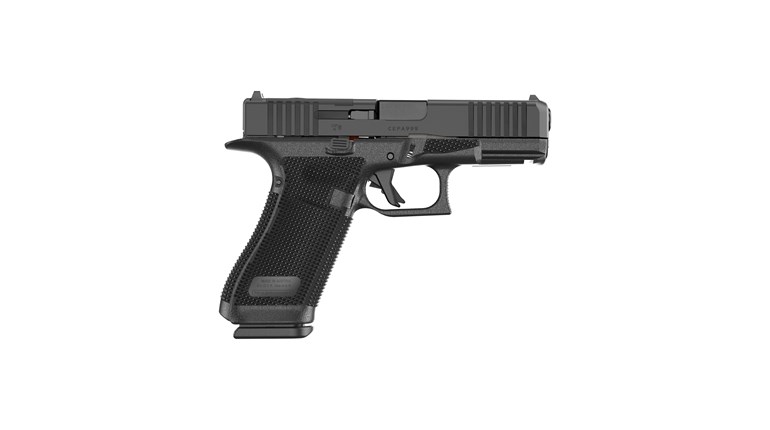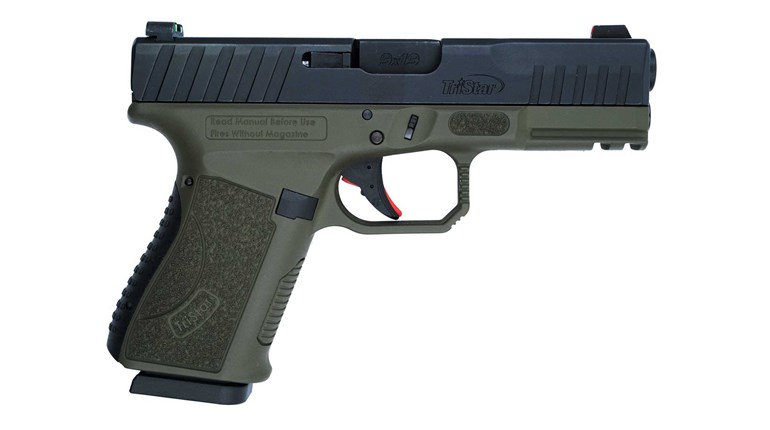
A watchful eye on trending and sharing patterns on social media tells us we’ve struck a helpful chord with our Battle of the 9 mm Single Stacks (S&W Performance Center Shield vs. “regular” Shield vs. G43). So here’s another: this week, a peek at the smaller cousins of 9 mm Kurz-land, otherwise known as .380 ACP: the Glock G42 and Smith & Wesson M&P “Bodyguard.”
A little background: .380 ACP is a John M. Browning-designed cartridge first seen slightly over a century ago, and by the standards of the day it was an all-but-instant success. Appearing roughly a decade after Georg Luger’s considerably more powerful 9 mm Parabellum (9x19 mm dimensions), similar diameter bullets were mated with reduced case capacity (9x17 mm). It had less “oomph” but also less pressure, and could therefore be chambered in truly pocket-sized pistols of mostly blowback action type.
Early .380 pistols were decidedly better than nothing, but as time wore on they acquired a marginal fight-stopping reputation. As the 9 mm Short, they became a staple of police issue and even limited military service in Europe for nearly half a century, and popular in the U.S. as the smallest viable defensive caliber. Many well-known pistols on both sides of the Atlantic were chambered in it, the most notable likely being the Walther PPK of Ian Fleming/James Bond fame.
As a matter of practical use, many found blowback .380s hard-recoiling. The weight of the slide and a generally stiff spring were all that kept the action closed until pressure fell to a safe level and the bullet had exited the barrel. These factors also made .380s “technique sensitive”: good grip mechanics were a sine qua non to keep these pistols running, and their modest dimensions required decisive handling. Interest in .380s waned in the 70s, juuuuust in time to render Colt’s release of a scaled-down 1911-like pistol as too little, too late. The “Government .380” model pistols departed from blowback, operating from a locked breech. Though somewhat expensive, they were generally a delight: accurate, soft-shooting and reliable.
The net effect was a caliber that languished in niches until about 10 years ago. Enter, albeit by a circuitous route, the likes of our Smith and our Glock. This pair takes notable advantage of modern materials (polymer frames, for instance) and fabrication techniques to make a new generation of .380s that is carving serious inroads in the discreet concealed-carry world.
And as we think you’ll see, with very good reason.
Sights–Neither pistol starts out with what we’d call “good” sights. Usable, sure, but we’d replace both in a hurry. The G42 wins by a tiny margin, and only after a fashion: the standard white dot-in-“U” offers slightly better sight visibility than the black-on-black of the Bodyguard, though the latter’s are of steel, and therefore superior in terms of ruggedness.
We’ve shot G42s with these Trijicons, and the results were transcendental: utterly reliable hits at waaaay beyond defensive range. Superb in both daylight and very low light, they may still be a little rich for the blood. Bummer alert: They’re not available for the Bodyguard. In that case, we’d slap something like these Williams fibers on either, hoping to mimic the excellent results a similar kit generates on the 9 mm Performance Center Shield.
Accuracy–“This is easy: For shorty guns, both were absurdly accurate.” We apologize for the questionable practice of quoting ourselves, but it is the shortest distance between two points, and the truth.
We tried both pistols with two types of defensive hollow points (Remington 102-grain “Golden Saber” and Federal 90-grain HST), as well as PMC, Federal/American Eagle and Winchester RNs, with uniformly good results. Granted, points of impact differed, but not enough to concern us at the defensive ranges of the either pistol.

It’s hard to call it an edge, exactly, as it relates mostly to shooting fun, but it is a kick to hit stuff at 40 and 50 yards with a very small pistol. The G42 will do this handily.
Trigger–The rubber meets the road in a big way when we get to triggers. If you read our predecessor 9 mm column, you’ll note those guns shared a striker-fired action, something that cannot be said when comparing the G42 to the Bodyguard. Glock sticks with striker ignition in the G42, while the Bodyguard uses a slide-shrouded hammer in a double-action-only mode.
This is an important distinction. We think the Glock trigger is superior out of the box, and improved to even greater advantage with this from Ghost Inc.
This doesn’t mean there’s anything wrong with the Bodyguard, and in fact we shot it “well” in the sense of accurately. But have no illusions: Double-action triggers on small pistols are demanding, and they require both practice (as in put your other stuff away for a while) and proper (and quite likely different) trigger technique.
Reliability–Quite frankly, we expected more trouble from both here, but only experienced issues in one circumstance. This gloomy expectation may have been a “hangover,” so to speak, from years of finicky predecessors. Ours was ammo-related: we had three failures to cycle in the Bodyguard and two in the Glock, but both with the same brand of training ammo in a 95-grain round nose. We shot it up, will buy no more, and call the problem solved. Other brands in this projectile weight and nose shape (RN) were fine.
Neither of our tested defensive choices were even slightly balky or punishing (as some older .380s surprisingly were), and both cycled out of the pistols with ease—another problem from the old days seemingly banished. And good riddance.
Magazines–Both pistols feature the same capacity—six in the mag plus “one in the pipe”—so this comparison is a wash. Neither was especially hard to load, as magazine springs in .380s apparently don’t have to be fashioned from 18-wheeler suspension stock (due, we think, to the fact that slide speeds in the lower-pressure .380 ACP don’t call for quite such energetic up-force in the loading process when compared to the bigger and much higher operating pressure single stack 9 mms).
Where the Glock picks up an edge is in providing two magazines (one flat-bottomed, the other with “pinky” rest), to the Bodyguard’s one. Why anybody is still selling auto-loaders with a single magazine is a different question, and we leave it for another time—just sayin.’

As with the 9 mms, speedy reloads are an acquired skill with pistols this small for a host of reasons, though this is no excuse to ignore them. (This may help)
There is a reasoned argument to be made that magazine and Grip discussions are inseparable in comparing the Bodyguard and G42, and we’d concede the point. No mystery as to why, either: Although both weigh out in similar terms (about 16 ounces loaded for the Smith, and a little over 17 ounces for the Glock), the grips are actually quite different. Unless your hands are extremely small, the M&P is a “dangling pinky” gun, period, while magazine choice (or after-market modification) allows even our biggish mitts full purchase on the G42. This has corresponding shooting benefits, and also has the potential to add capacity as well.
Goodies–By a happy chance, both of our eval guns were equipped with lasers from the good folks at Crimson Trace. Generally speaking, we’re ambivalent toward these aiming aids: Properly employed, they may be quite literally life-saving because of the extremely rapid, alternate type of “aiming” they allow; but if, like some, you’re planning to use them as an excuse not to learn how to use your conventional sights, that’d just be dumb (and no fault of the nice folks at Crimson Trace.)
On small defensive guns, however, they may be particularly advantageous as long as they don’t comprise the basics of safe, effective manipulation of the gun. Here, our verdict is a simple one—on both pistols, the CTC lasers worked very well. Aiming from difficult hand positions was rapid and precise.
We close our comparison with a consideration that relates as much to the .380 ACP caliber as to our fine Glock and S&W exemplars. Like so many others—especially 9 mm—bullet architecture and materials have made the caliber more effective in recent years. Moreover, a century of development and locked breeches are not just better, but much more comfortable to use. Whether it’s yet the fight-stopper a carry gun needs to be depends more on shot placement than anything else, and that will always be a matter of diligent training, though avoidance is a better option yet.
The decider between the G42 and the Bodyguard may rest in carryability, and each gets a different nod. We’d offer the Glock as the smallest pistol that for most adult hands won’t require substantive technique changes; it’s an easier pistol to shoot well, and can be given a capacity and grip advantage. The S&W Bodyguard might prove the better choice if ultra-discreet carry is the goal; the dimensional differences aren’t huge, but they add up—or should we say down?—to a reliable, accurate pistol that will fade into a host of carry modes. Just be prepared to practice a good deal before your technique adapts to produce rapid, precise results.
What can’t be argued, however, is that either pistol you’ll carry—and, presumably, train to competency with—is far better than a more whatever left at home.

































